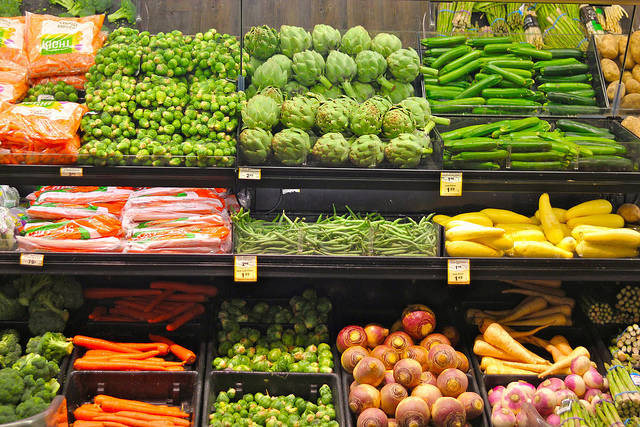This article is more than 1 year old
My HOUSE used to be a PUB: How to save the UK high street
Say it with me: planning permissions
Worstall on Wednesday Interesting news on the Blighty high street as Tesco continues to lose market share: now it has fallen behind Amazon as the retailer of choice for the sort of shiny-shiny we buy each other for Crimbo.

Roomy fridge, isn't it? I think we'll put the kids' room here. Photo by Daniel Cukier Licensed under CC 2.0
At the other end of the market, it's losing the cost-conscious shopper to Aldi and Lidl. While that all adds up to hard times for the nation's greatest retailer (in what used to be a nation of shopkeepers), it's the online part that means we might want to start thinking about changing the planning laws and the way we view cities.
Tesco's prospects have been dealt yet another blow after the retailer relinquished its grip on the prized music, games, and video market in the run-up to the critical Christmas trading period.
Tesco’s share of the multi-billion pound entertainment market plunged from 20.6 per cent in the 12 weeks between June and September in 2013, to 15.1 per cent in the same period this year, according to new figures from Kantar Worldpanel, the retail data provider.
In a further setback, Tesco surrendered the number-one spot to US retail juggernaut Amazon, which saw its share leap from 17.6 per cent to 22.5 per cent year-on-year, as customers continue to buy more items online.
Here's another interesting point: according to the BRC/KPMG retail sales monitor, online shopping (including Ocado and the supermarket's own services) now accounts for some 16 per cent of UK retailing. And some 12 per cent of retail space in the UK is standing empty.
It's entirely possible there's a connection here. We've built an environment meant for one set of technologies and then we've gone and changed the technologies we're using: we might well want to change that built environment.
This, of course, brings up that terrible bugbear: who should plan this change? To which I say we've another method to deal with such things. Get rid of much of the planning and let the market deal with it all.
Here's the basic problem: instead of having lovely shops in the high street, and not so lovely shops on the outskirts of town, we're now getting an ever-increasing portion of our desires from warehouses that might be as much as 50 miles away. Obviously, this is what enough people desire to happen, and because enough people are doing it – it is happening.
But it brings with it two separate problems. The first is that people do seem to have an attachment to the idea that a town centre shouldn't become a howling wasteland. The second is that the retailers themselves are howling at the unfairness of paying rates on shopping sites when non-shopping sites (but shopping organisations) don't have to.
How might we deal with all of these problems?
